Generative poetry introduces chaos and multiplies possibilities. Also, it constrains the author. It forces her to consider language as a series of assorted tools. What does an adjective do to a poem? How can we categorize adjectives? What makes an answer?
The process for creating these poems involved stretching my brain into a different type of writing-thinking. Normally when I write, I think of specific words and ideas. For these poems, I had to make myself consider questions like: “What are the characteristics of the language formula, ‘the + adjective + noun + verb + direct object?'” What associations do we have with that particular language equation? “
There aren’t concrete answers to these questions. But by asking the questions and sorting different language formulas into what feels most thought-provoking, I could begin to write the poems. For example, the first step of my writing process for the poem, “theProjectOfTheAgouti,” was a decision to have the poem be a short narrative about coming across a person, asking them a question, and waiting in anticipation for their answer. This was my more Dinacon-related poem, as one of the primary dynamics of Dinacon for me has been trying to learn as much as I can from others, which is an inspiring, but sometimes fraught process. A large portion of the word banks for this poem involved Dinacon-related words and overheard conversation, and I inserted Dinacon participants’ names in for the characters of the poem. I also brought in the personage of Bolsonaro, and the location of the Amazon, since the Amazon fires were just being publicized at that time, and seemed especially poignant as we were in a different, not on fire, rainforest.
For the second poem, I allowed myself to venture away from Dinacon a little bit. I wanted to write a poem about the process of searching for things and being thwarted, and then trying to appreciate what happens even if it’s not what you were looking for. The poem, “sometimesAtDawn” was the result.
One of the technical challenges of the poems was playing with timing. I wanted to introduce a bit of hesitation into the program, in order to mimic the rhythm of writing. The idea was to further flesh out the fantasy that the computer was writing a poem. I think I succeeded only partially in this respect, and have other ideas I still want to implement.
A language-related challenge was how to make the poems surreal, while also seeming potentially meaningful. So many automatically produced poems come across to me as complete nonsense. I wanted the reader to have that pleasurable feeling that comes from reading something very strange and somewhat random and making meaning out of that. This challenge involved a lot of tweaking of the word banks, so that no poem would seem completely unreasonable. The more I can walk the line on this though, the more the reader can recognize the creative process involved in reading anything and processing any information. My most ambitious hope with a project like this is that the reader will come away with an understanding of how much their particular brain shapes everything that they take in, and along with that, a healthy distrust of their own thinking patterns.
Here are two examples of the poems. If I’ve calculated correctly, “theProjectOfTheAgouti” has about 200 million possibilities (though many of them are very similar to each other) and “sometimesAtDawn” has around 500,000 possibilities. Automatically regenerating versions of the poems can be viewed on my website dezmediah.com
In the Dinalab,
there is Andy.
“What is the project of the agouti, Andy?”
Andy screams.
“The slime eats the oats in the most efficient way possible.”
Sometimes
at dawn,
I look past the
hairy
3D print of a rambutan
behind my bathroom mirror,
and find
instead
a drooling
valerian root.

